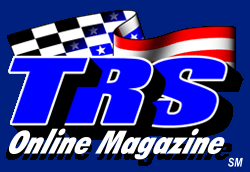|
OK
now for the big questions;
1)
Did it change anything?
2)
Did it feel different?
3)
Will it help you?
4)
Lastly would I recommend them?
To
the first three I will have to say YES
!!
I
have, as of this writing, driven about 250 miles with the
traction bars installed and I never expected this much
difference: it’s much better. There’s almost none of the old
hopping problem. I still get some bumps from lousy pavement.
Bumps are unavoidable; at least the bad pavement isn’t causing
the rear axle to hammer my teeth anymore. There are a couple of
other things the traction bars have “fixed” that I never
thought about before doing the install. These have come as a
pleasant surprise. The first is that when going through a turn
with rough pavement the rear used to hop around (jump out) a lot
when under power. Bet that sounds familiar. That’s almost gone
it seems that the rear stays on the pavement better than before.
There is less body roll from the rear than there used to be. I
can’t swear to that one but it seems that way. It may just be
because the rear is tracking better and so gives that
impression. Braking is better as well: even though I have ABS (I
hate it) it seems to track straighter. Under very hard braking
it used to dance around, some times violently, with the
vibration from spring wrap up.
To
the last question “would I recommend them”. I would have to
give a qualified yes. Qualified in that if you’re like me,
driving a 4X2 mostly on pavement with only an occasional trip
down a dirt road for fishing or hunting. Then yes they’re a
good deal. If you’re into hardcore off roading, rock climbing
etc. I don’t think so, your probably much better off with
bigger ones. I don’t believe these would survive that kind of
usage for long: their just not strong enough.
All
isn’t perfect however; there are a couple of drawbacks. The
first is that the rear springs seem “stiffer”. This is
probably the bar working against the springs tendency to want to
twist up that normally would absorb most of the little bumps.
That I can live with, after all it’s a truck not a Lincoln.
But the biggest drawback and what really ticks me off is that
the squeak that I have in the passenger’s seat is worse.
&%$^()) (&%$##ing seat!!!!!
Have
fun
Tools
needed for the job;
3/8”
drill and drill bit (for the forward mounting plate bolt holes)
9/16”
socket w/ratchet handle and box wrench (for the forward mounting
bolts & nuts)
3/4"
socket w/ratchet handle and box wrench (for the rear bar
mounting bolt and the forward adjuster nuts)
18mm
deep socket w/ratchet handle (for the U-Bolt nuts, maybe a
breaker bar to start them)
Angle
or bench grinder (to modify the axle mounting plates bottom
front and rear edges)
Large
hammer and anvil, vise, or even a smooth section of concrete in
a pinch (to “reshape” the forward mounting plate)
|
